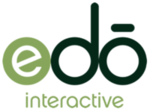 The folks in charge of Citibank’s website are sure brave. I’m not sure I’ve ever seen this dramatic of a change overnight in a major banking website (see before and after screenshots below). The bank rolled out the new site Sunday night and it seems to be running smoothly today.
The folks in charge of Citibank’s website are sure brave. I’m not sure I’ve ever seen this dramatic of a change overnight in a major banking website (see before and after screenshots below). The bank rolled out the new site Sunday night and it seems to be running smoothly today.
My first impression is positive. Banking websites tend to be too cluttered. So they either overwhelm prospective customers or cause existing customers to tune the whole thing out. This seems like a step in the right direction, but only the company’s web analytics team knows for sure. I’m sure it’s been an interesting Monday for everyone involved.
The bank moved the majority of the previous homepage links (see last screenshot) into drop-down "mega menus" that are only displayed when clicking on one of the seven primary navigation items at the top of the page (see second screenshot). The drop-downs only appear after an actual click, so the don’t cover up the page when you accidently hover over them with the mouse.
 While the new site is clearly less busy overall, the bank has actually added two new items on the main (top) navigation bar:
While the new site is clearly less busy overall, the bank has actually added two new items on the main (top) navigation bar:
- Rewards & Offers: Highlights the bank’s ThankYou rewards program, AAdvantage co-branded card, and other programs. Given the bank’s emphasis on rewards, this is a good addition.
- Services: This is a catchall leading to sections on online banking, mobile banking, and unusual features such as PopMoney p2p payments. Most items are repeated in the main Banking navigation item. While it seems redundant from a navigation perspective, perhaps it’s a marketing tool for prospects looking for "banking services."
The new site renders nicely on an iPhone, displaying the login box, then navigation items in a vertical format (see inset). I’m not sure if this is a change from the previous site. Note the banner ad at the top promoting the bank’s @AskCiti Twitter site.
There are also numerous changes in the online banking area, notably the addition of PFM features powered by Yodlee’s FinApp development platform. I’ll look at those in a future post.
————————-
1. New: 3 Oct 2011
Note: The main graphic, a young woman feigning delight over a bag of gift cards from Citi, is the same in both the before and after shots. But the new version is a mirror image of the old.

2. New design with Banking "mega menu" displayed over graphic

3. Previous: 30 Sep 2011 (from Google cache)
Note: The yellow highlights are on Google’s cached copy only, they would not have appeared on the actual Citi website.

 Netbanker highlights BillGuard’s monthly credit/debit card scan report.
Netbanker highlights BillGuard’s monthly credit/debit card scan report.












